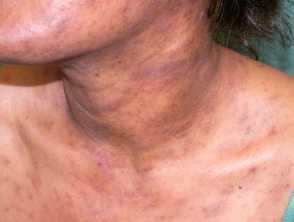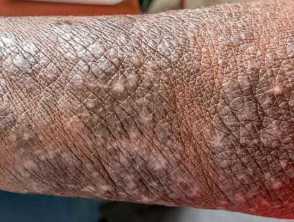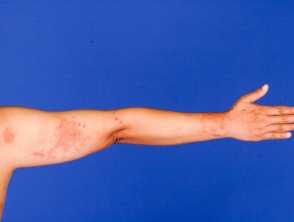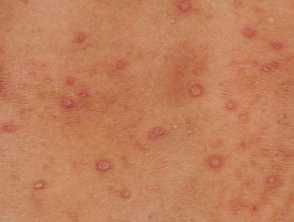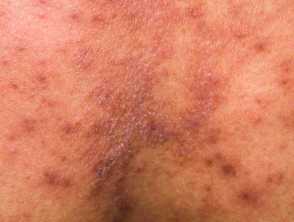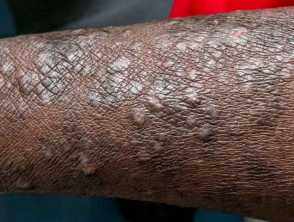What is pruritic papular eruption of HIV?
Pruritic papular eruption of HIV (Human Immunodeficiency Virus) is the most common rash associated with HIV infection, and is often the presenting sign in an otherwise asymptomatic HIV-positive person.
Pruritic papular eruption of HIV
Who gets pruritic papular eruption of HIV?
Pruritic papular eruption (PPE) of HIV affects 11–46% of patients with HIV, including children. The prevalence varies with geographic location and is most common in the tropics and subtropical areas.
Most studies report a female predominance.
PPE of HIV is the presenting symptom of HIV in 25–79% of cases. It is classified as WHO Stage 2 HIV disease. It is reported to be a skin sign of advanced HIV, being three times more common when the CD4 lymphocyte count is less than 200 x109/L.
What causes pruritic papular eruption of HIV?
Currently the cause has not been identified. Medications, autoimmunity, and direct HIV infection of the skin have been considered but not proven. An exaggerated immune response to insect bites is supported by the geographic distribution, clinical and histological features, and increased IgE and eosinophils in the blood.
What are the clinical features of pruritic papular eruption of HIV?
Pruritic papular eruption of HIV presents as a very itchy chronic rash:
- Small, red, intensely itchy, firm papules
- Induce scratching
- Evolve into hyperpigmented macules and nodules
- Most common on exposed skin, particularly the extremities
- Sparing of mucous membranes, palms and soles, and web spaces.
PPE of HIV has not been observed in the immune reconstitution inflammatory syndrome (IRIS).
Pruritic papular eruption of HIV
What are the complications of pruritic papular eruption of HIV?
- Psychosocial effects and stigmatisation
- Lichenification and scarring
- Postinflammatory hyperpigmentation, particularly in skin of colour
How is pruritic papular eruption of HIV diagnosed?
Pruritic papular eruption of HIV should be suspected clinically in a patient at risk of, or known to have, HIV infection.
Investigations include:
- Blood tests for HIV infection, viral load, and CD4 lymphocyte count
- Skin biopsy - superficial lymphocytic perivascular infiltrate with eosinophils.
What is the differential diagnosis of pruritic papular eruption of HIV?
- HIV-associated eosinophilic folliculitis
- Infective folliculitis eg, malassezia folliculitis
- Acne
What is the treatments of pruritic papular eruption of HIV?
Symptomatic measures
Itch may be relieved when using:
Specific measures
Effective highly active antiretroviral therapy (HAART) has been reported in case series to provide not only symptomatic relief of itch, but also resolution of PPE of HIV lesions without recurrence in the majority of patients.
What is the outcome for pruritic papular eruption of HIV?
Untreated, pruritic papular eruption of HIV is persistent.
